#coir peat
Explore tagged Tumblr posts
Text



5/4/24 ~ Some new stuff I’m using this year. I’ve never used Coco Coir before today & I loooove it! So much product in a compact lil brick! And it’s repurposed natural material, so win win. I still used a little bit of my seed starting mix to mix in with it just because that’s all I know 😅😆
But I’m learning about the different medias/compost for planting!
I also got a bag of worm castings. Mixed some of it in there as well. We shall see how it does!
What do you use to mix in your media?
#soil health#soil#soil testing#horticulture#worm castings#coco coir#peat moss#compost#compost garden#organic matter#kiss the ground#microbes#indoor garden#sustainable gardening#container gardening#vegetable gardening#starting seeds#growing food#plant life#plant mom#veganuary#homesteading#gardening tips#organic garden
7 notes
·
View notes
Note
I need you to know, I am getting a centipede because I keep seeing yours on my dash.
(don't worry though, I'm an experienced bug keeper and did the research to know what I'm getting into, your posts definitely tipped the scales though)
i'm so happy to hear that! how exciting! :D what species are you thinking of getting??
if you'd like any advice or tips on their care do let me know, i'd be happy to help and if you have questions that i can't answer i can put you in touch with people who are way more experienced than me. <3
+ gyomei for tax

#asks#yippeee!#i'm sure you know already if youve done loads of research but just in case:#they need good cross-ventilation at the bottom of their enclosure#NO COCO FIBER/COIR!!!! best go-to is sand mixed with peat or topsoil#remove uneaten food/leftovers asap as buildup of gases is bad for them#one side can be sprayed to keep it damp and the other dry#always provide a water dish#you have to walk a fine line between mycosis and dessication with pedes unfortunately. it can be a little daunting at first#too wet/stagnant = mycosis breeding ground#too dry/no water dish = dessication#a varied diet is best#crickets superworms roaches copper-free cat food and raw meats are all fine
4 notes
·
View notes
Text
whoever said coco coir is a great growing medium lied
#everything i grow in it dies and molds and it dries up too quickly#i want to like it. i really do. i want coco coir to work vs the fucking peat soil. but. it just doesnt
5 notes
·
View notes
Text
Coco Coir Pots
Title: Harnessing the Green Magic of Coco Coir Pots for Sustainable Gardening
Introduction: Coco coir pots, the eco-friendly alternative to traditional plant containers, are taking the gardening world by storm. These biodegradable pots, derived from coconut husk fiber, offer numerous benefits for both garden enthusiasts and the environment. In this blog post, we'll delve into the world of coco coir pots exploring their many advantages and how they contribute to sustainable gardening practices.
Understanding Coco Coir Pots: Coco coir pots, also known as coir pots or coir planters, are made from coconut coir, a natural fiber extracted from coconut husks. Unlike plastic or clay pots, coco coir pots are biodegradable and have a unique ability to enhance plant growth.
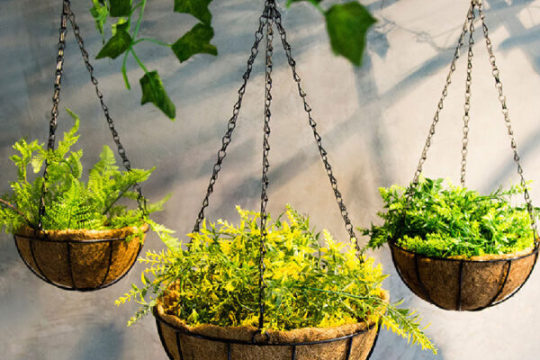
Advantages of Coco Coir Pots: Let's explore some of the key benefits of using coco coir pots in your gardening endeavors:
Biodegradability: One of the most significant advantages of coco coir pots is their biodegradability. These pots break down naturally over time, eliminating the need for disposal and reducing environmental waste.
Reduced Transplant Shock: When it's time to transplant your seedlings or young plants, you can plant the entire coco coir pot directly into the soil. This reduces transplant stress and minimizes root disturbance, ensuring a smoother transition for your plants.
Improved Aeration: The porous nature of coir promotes aeration and air pruning of roots. This leads to healthier root development, as roots are encouraged to grow within the pot and not become root-bound.
Enhanced Moisture Retention: Coco coir is excellent at retaining moisture, which means you won't need to water your plants as frequently. It provides a consistent and steady supply of moisture to the roots.
pH Neutral: Coco coir has a neutral pH level, making it suitable for a wide range of plants. You can easily adjust the pH to match specific plant needs.
Eco-Friendly Alternative: Choosing coco coir pots supports eco-friendly gardening. By opting for biodegradable containers, you reduce plastic waste and minimize the environmental impact of traditional plastic pots.
Versatility: Coco coir pots come in various sizes, making them suitable for different types of plants, from small seedlings to larger ornamental trees. They can be used in both indoor and outdoor gardening.
youtube
Additional Uses of Coco Coir Pots: Coco coir pots aren't limited to just planting. Here are some other applications:
Mulching: Coir pots can be used as mulch. When placed on the soil's surface, they help retain moisture, regulate soil temperature, and reduce weed growth.
Composting: When your coco coir pots are no longer needed, you can add them to your compost pile. They'll break down and enrich the compost with organic matter.
Craft Projects: The natural texture and appearance of coco coir make it a great material for various craft and art projects. Get creative and use coir in your DIY endeavors.
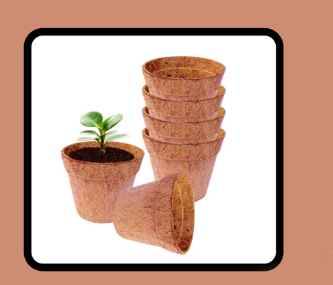
Conclusion: Coco coir pots are a game-changer for sustainable gardening. Their biodegradability, reduced transplant shock, and ability to improve plant growth make them a valuable asset for gardeners. By choosing these eco-friendly alternatives to traditional plant containers, you not only promote healthier plant growth but also contribute to a greener and more sustainable future. Whether you're an avid gardener or just starting out, consider making the switch to coco coir pots and witness the green magic they bring to your garden.
#Coir Dust#Coir Pith#Coco Peat#Long Type Grow Bag#Grow Slab#Coconut Coir Pith#Coir Pith Near Me#Pith Coconut#Coco Pith Near Me#Coir Fibre Pith#Coconut Husk Pith#Coco Coir Pots#Coco Soil#Coconut Fiber For Plants#Coco Pot#Coir Pots For Plants#Peat Grow Bags#Youtube
2 notes
·
View notes
Text

0 notes
Text
Nathan Coir: Leading Coco Peat Manufacturer in India for Quality & Sustainability
Introduction
When it comes to high-quality coco peat and potting mix, Nathan Coir stands out as one of the leading coco peat manufacturers in India. With years of expertise, cutting-edge technology, and a commitment to sustainability, Nathan Coir has earned a strong reputation in the industry. Whether you are looking for premium-grade coco peat manufacturers in Tamil Nadu or reliable coco peat suppliers in India, Nathan Coir is the trusted name to meet all your requirements.
About Nathan Coir
Nathan Coir is a well-established company specializing in the production of coco peat-based products. With a strong presence in both domestic and international markets, the company ensures the highest standards in manufacturing and distribution. As one of the top coco peat manufacturers in Tamil Nadu, Nathan Coir sources the finest raw materials to create eco-friendly, durable, and high-performance products.
Our Product Range
1. Coco Peat Powder
Nathan Coir provides high-quality coco peat powder, an excellent soil conditioner used in gardening, horticulture, and agriculture. Being a leading name among coco peat manufacturers in India, we ensure premium quality for optimal plant growth.
2. Coco Peat Blocks
As one of the premier coco peat manufacturers in Tamil Nadu, Nathan Coir specializes in coco peat blocks, available in various sizes and designed for use in agricultural and hydroponic applications.
3. Potting Mix
Nathan Coir also offers high-quality potting mix, a perfect blend of coco peat and essential nutrients to support plant growth, making us a trusted coco peat supplier.
Why Choose Nathan Coir?
1. Superior Quality Assurance
As one of the most trusted coco peat manufacturers in Tamil Nadu, we adhere to strict quality control measures to ensure our products meet international standards.
2. Sustainable Manufacturing
Nathan Coir is committed to eco-friendly production. Our coco peat products are biodegradable and made using sustainable practices.
3. Competitive Pricing & Bulk Supply
Being one of the top coco peat manufacturers in India, we provide cost-effective pricing for bulk buyers without compromising quality.
4. Global Reach & Export Quality
Our products are exported worldwide, making us a leading coco peat supplier catering to international demands.

Conclusion
Nathan Coir is your go-to solution for all coco peat-based products. Whether you are searching for coco peat manufacturers in India, coco peat manufacturers in Tamil Nadu, or reliable coco peat suppliers, Nathan Coir delivers the best quality and service. Contact us today to learn more about our premium range of coco peat-based products!
#coco peat manufacturers in india#coco peat manufacturers in tamilnadu#coir manufacturers in india#coir products manufacturers
0 notes
Text

Coco coir yarn exporters in india
🌱 Sustainable, Strong, and Eco-Friendly! 🌱
Coco Coir Yarn is the perfect natural solution for your gardening, crafting, and home décor needs. 🌿
✅ Biodegradable ✅ Excellent water retention ✅ Mold-resistant
🌿 Use it for plant support, DIY projects, and more!
#Coco peat exporters in india#Coco peat growbag exporters in india#Coco coir yarn exporters in india#Pollachi semi husked coconuts exporter#Indian pollachi coconuts exporters#Fresh coconut exporters in india#Coco peat grow bag exporters & suppliers#Buffered Coco peat growbag exporters#Coir yarn exporters and suppliers in tamilnadu India
1 note
·
View note
Text
Unlock the insights into the world of coco peat exporters, exploring key players and market trends. Discover the dynamics shaping the industry with Seair Exim Solutions.
#coco peat export#coco peat exporters#coco peat exporters in india#coco peat importers#coco peat export data#Coir Pith export data#Coir Pith exporters in india#Coir Pith exporters
1 note
·
View note
Text
INTRODUCE COCO-COIR CIRCLES.
WHAT IS COCO-COIR CIRCLES?? coco-coir wreath is a crafts made from coconut fiber which are shaped into circles and decorated according to your wishes.
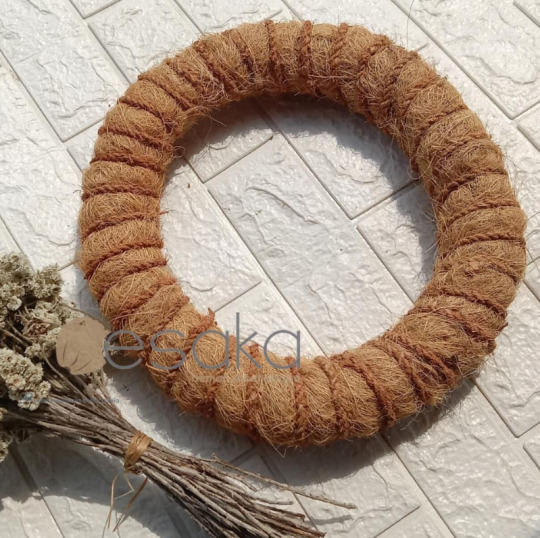
BENEFIT OF COCO-COIR CIRCLES. Usually used to decorate bedroom walls, living rooms, weddings and also for Christmas decorations.
ABOUT OESAKA INDONESIA Oesaka is an abbreviation for coconut fiber house. Oesaka Kebumen focuses more on production and large sales. Meanwhile, Oesaka Jogja focuses on online, offline sales and also social media.
FOR MORE INFORMATION : https://linktr.ee/oesaka.indonesia
#coconut#coco coir#coco peat#cocofiber#cocomesh#exporter#cocobag#crafts#animation#hand crafted#handmade#crafting#handicrafts#craft beer#craftblr#diy craft#fiber arts
1 note
·
View note
Text
Unlocking the Best Deals: Your Guide to Coco Peat Price Online

Introduction:
Are you in search of premium-quality coco peat for your gardening and agricultural needs? Look no further, as we bring you the ultimate guide to finding the best deals on Coco Peat Price Online. In this comprehensive article, we'll explore the world of coco peat, its myriad benefits, and how to source it from reliable suppliers at the most competitive prices. Whether you're a seasoned gardener or a newbie in the world of horticulture, understanding coco peat and where to find it online is essential to achieving successful and sustainable plant growth.
Chapter 1: What is Coco Peat?
Coco peat, also known as coir pith or coir dust, is a natural byproduct derived from coconut husks. It's a sustainable and eco-friendly alternative to traditional soil, offering numerous advantages for gardening and agriculture. Coco peat is an excellent choice for those seeking a soilless growing medium that's rich in nutrients, water-retentive, and lightweight. Its ability to retain moisture while providing aeration to plant roots makes it a popular choice among gardeners and horticulturists.
Chapter 2: The Benefits of Coco Peat
Coco peat offers a multitude of benefits that make it a superior choice for gardening and agricultural applications. Here are some of the key advantages:
Water Retention: Coco peat has remarkable water-holding capacity, reducing the frequency of irrigation and ensuring consistent moisture for plant roots.
Nutrient-Rich: It is naturally rich in essential plant nutrients like potassium, phosphorus, and micronutrients, promoting healthy plant growth.
pH Neutral: Coco peat has a neutral pH, making it suitable for a wide range of plants. It can be easily adjusted to meet specific plant requirements.
Lightweight: The lightweight nature of coco peat facilitates easy handling and transportation, reducing labor costs.
Biodegradable: It is an eco-friendly and sustainable growing medium, making it an excellent choice for environmentally conscious gardeners.
Chapter 3: Finding the Best Coco Peat Price Online
Now that we understand the value of coco peat, it's time to explore the options for purchasing it online at the best prices. When searching for coco peat suppliers and deals, consider the following steps:
Search Engines: Use popular search engines to look for "Coco Peat Price Online." These search results will provide you with a list of suppliers and e-commerce platforms offering coco peat for sale.
Online Marketplaces: Check well-known online marketplaces like Amazon, eBay, and Alibaba, where you can find a variety of coco peat products from different suppliers.
Agricultural and Gardening Websites: Visit websites dedicated to gardening and agriculture, as they often feature specialized sections for coco peat products, along with competitive prices.
Coco Peat Manufacturers: Some coco peat manufacturers also sell their products directly to consumers through their websites. This can be a good way to get quality products at competitive prices.
Comparison Shopping: Once you've identified potential suppliers, compare the prices, shipping options, and customer reviews to make an informed decision.
Chapter 4: Assessing Coco Peat Suppliers
Not all coco peat suppliers are created equal, so it's crucial to do your due diligence when selecting the right one. Here are some factors to consider:
Quality: Look for suppliers with a reputation for providing high-quality coco peat. Read product descriptions and customer reviews to gauge the quality of their products.
Price: While price is essential, don't compromise on quality. Balance affordability with the quality of the coco peat to ensure the best value for your money.
Shipping Costs and Times: Consider the shipping costs and delivery times, especially if you're purchasing in bulk or have specific timing requirements for your gardening or agricultural projects.
Customer Support: Ensure the supplier offers reliable customer support. You may need assistance with orders, product information, or troubleshooting.
Sustainability: If you're environmentally conscious, inquire about the supplier's commitment to sustainability and eco-friendly practices.
Chapter 5: Coco Peat Price Online: Tips for a Great Deal
To secure the best deals on coco peat, here are some tips to keep in mind:
Buy in Bulk: Purchasing coco peat in larger quantities can often result in cost savings per unit.
Subscribe to Newsletters: Many online suppliers offer discounts and promotions to subscribers, so consider signing up for their newsletters to stay updated on special offers.
Keep an Eye on Seasonal Sales: Some suppliers may have seasonal sales or discounts during specific times of the year, so monitor their websites for these opportunities.
Read Reviews: Customer reviews can provide valuable insights into the quality of the coco peat and the supplier's service.
Contact the Supplier: If you have specific questions or are looking for a custom solution, don't hesitate to contact the supplier directly. They may be able to offer tailored advice and pricing.
Conclusion:
Coco peat is a versatile and eco-friendly growing medium that can enhance the success of your gardening and agricultural endeavors. By following our guide and using the right keywords like "Coco Peat Price Online" in your online searches, you can find the best deals on coco peat from reputable suppliers. With its excellent water retention, nutrient-rich composition, and pH neutrality, coco peat is an investment in the future of your plants. So, start your journey toward greener, healthier gardens and farms today by exploring the world of Coco Peat Price Online.
0 notes
Text
What is coconut coir and what are its benefits for gardening?
Coconut coir, often simply referred to as coir, is a natural fiber extracted from the husk of coconuts (the inner part of the coconut fruit). It is a popular choice for gardening and horticultural applications due to its many benefits:
Sustainability: Coconut coir is a renewable resource because it is a byproduct of coconut harvesting. Using coir in gardening helps reduce waste and supports sustainable practices.
Excellent Water Retention: Coir can hold a significant amount of water while still providing good aeration to plant roots. It helps prevent overwatering and underwatering, promoting optimal moisture levels for plant growth.
Good Drainage: Coir has a fibrous and open structure that allows excess water to drain away, preventing waterlogged soil, which can harm plant roots.
pH Neutral: Coir has a near-neutral pH level, typically around 6–6.7. This makes it suitable for a wide range of plants, as it is less likely to affect soil pH significantly.
Slow Decomposition: Coir breaks down slowly in the soil, providing long-lasting benefits as an organic amendment. It improves soil structure over time.
Nutrient-Rich: While coir itself doesn’t contain many nutrients, it can absorb and release nutrients present in the soil, making them more available to plants.
Weed Suppression: Coir mulch can help suppress weed growth when used as a top layer in the garden. It blocks sunlight from reaching weed seeds, preventing them from germinating.
Lightweight: Coir is lightweight and easy to handle, making it a convenient option for container gardening and potting mixtures.
Disease Resistance: Coir is naturally resistant to bacterial and fungal diseases, reducing the risk of plant infections in potting mixes.
Eco-Friendly: Coir is biodegradable, so when it eventually breaks down, it does not harm the environment.
Coir is commonly used in gardening in various forms:
Coir Fiber: Used for improving soil aeration and water retention. It can be mixed with soil or added to potting mixes.
Coir Peat: Coir peat is a fine-textured, soil-like substance that is used as a soil conditioner or as a component in potting mixes to improve moisture retention and drainage.
Coir Mulch: Coir mulch is used to cover the soil surface in gardens and planters to retain moisture, reduce weed growth, and insulate soil temperature.
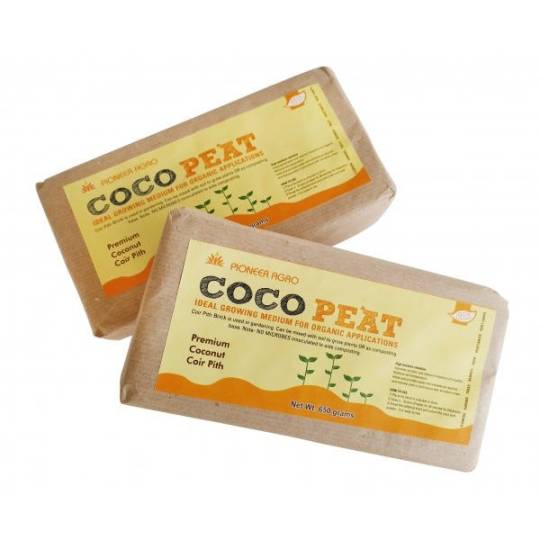
Coir Pots and Liners: Coir pots and liners are biodegradable alternatives to plastic pots and containers. They provide good drainage and can be planted directly into the ground.
Overall, coconut coir is a versatile and sustainable gardening material that can benefit plants by improving soil structure, moisture management, and overall growing conditions.
#home garden#terrace gardening kit in coimbatore#vegetable garden kit for terrace#agriculture#gardening#home garden shop#terrace gardening#home gardening#planting#coir#coco coir#coconut coir#coco peat
0 notes
Text
The Ultimate Guide to Choosing the Right Coco Peat for Your Garden
Coir pith, sometimes referred to as coco peat or coco husk, is a natural growth medium made from coconut husks. The procedure include gathering the husks, soaking them to soften the fibers, removing them, extensively curing them, and drying them. They are then graded and sieved to create fine coco peat, which is frequently used in gardening due to its sustainable, refreshing, and water-preserving qualities.
#coconut coir for gardening#what is cocopeat#advantages of cocopeat#cocopeat benefits#Coco Peat for Plants
0 notes
Text
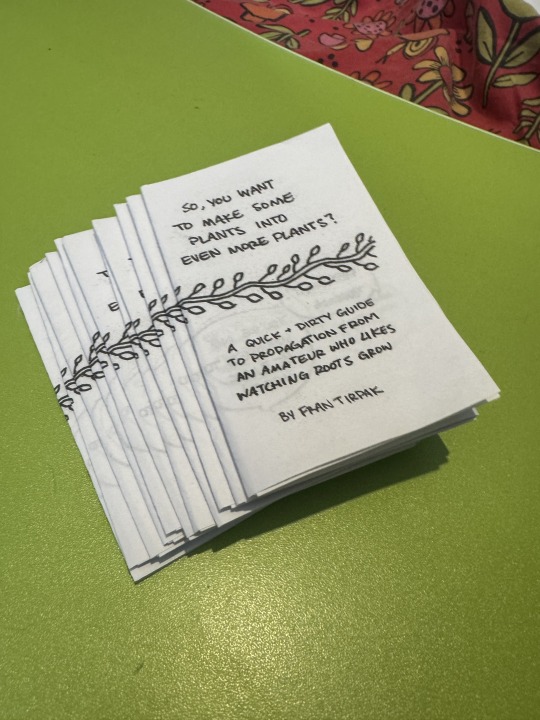
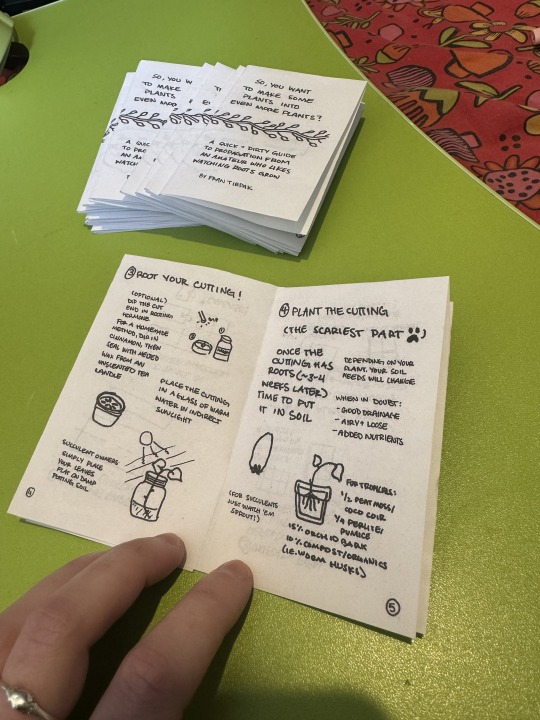
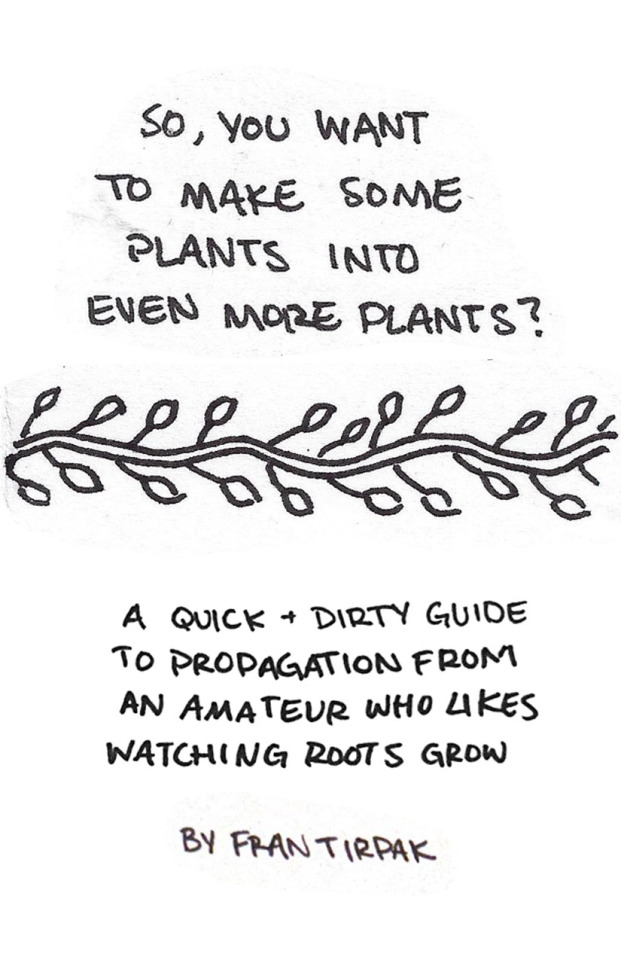


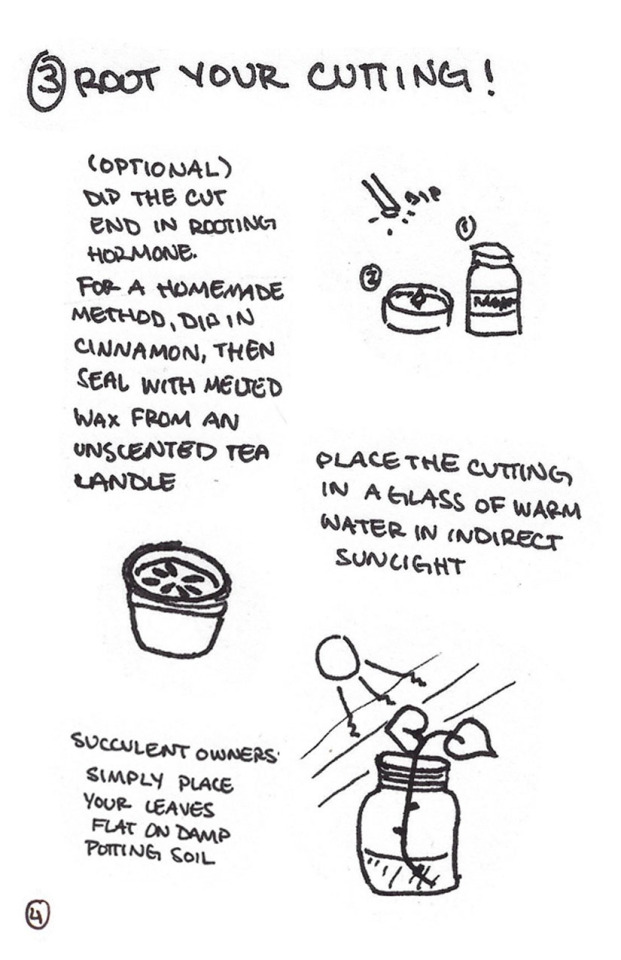
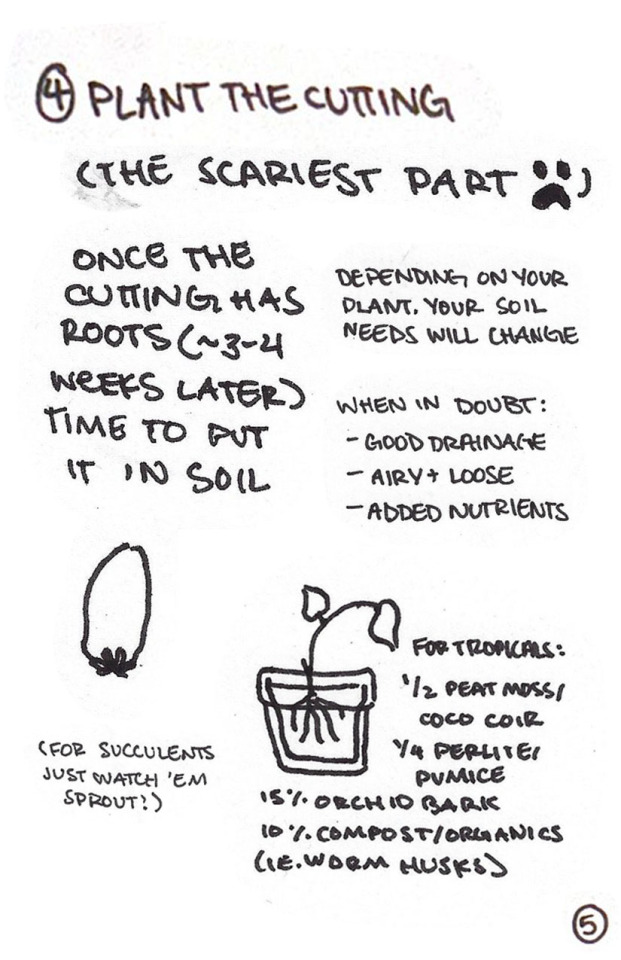
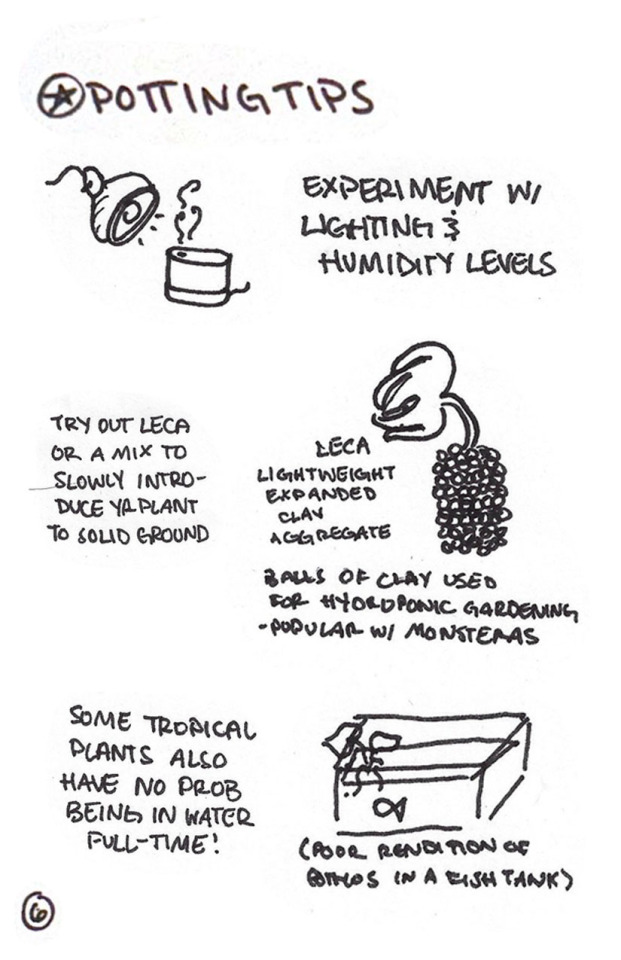


24-hour minizine (8 pages) about DIY propagation from leaf and stem cuttings (free to copy and distribute!! pls just take my name out if you change any content)
EDIT: thank you for all the love! check out @contentsunderpressurezine (instagram) for more of our stuff!
pdf download for print and read friendly versions on this ko-fi I just set up! pay what you wish, free to print and distribute
plaintext under the cut:
So You Want to Make Some Plants Into Even More Plants?
A Quick + Dirty Guide to Propagation from An Amateur Who Likes Watching Roots Grow. (by Fran Tirpak)
propagation - n.
"multiplication or increase, as by natural reproduction."
1. Prepare!
Important: Sterilize your shears w/ rubbing alcohol.
Wear gloves -- some plants can irritate your skin when cut.
Gather supplies: shears, gloves, soil medium, pot, glass jar.
Optional: plant food, rooting hormone, cinnamon, tealight.
^ we'll talk about these all more later on.
2. Take your cutting!
Succulents -- just pop off a leaf!
Vining plants (Pothos, Monstera), cut below one of the root nodes.
Woody stems (fiddle leaf, rubber plant) -- cut with 1-3 leaves at the top
3. Root your cutting!
(Optional) Dip the cut end in rooting hormone. For a homemade method, dip in cinnamon, then seal with melted wax from an unscented tea candle.
Place the cutting in a glass of warm water in indirect sunlight.
Succulent owners: simply place your leaves flat on damp potting soil.
4. Plant the cutting
(the scariest part)
Once the cutting has roots (~3-4 weeks later) time to put it in soil.
Depending on your plant, your soil needs will change.
When in doubt: good drainage, airy & loose, added nutrients.
For tropicals: 1/2 peat moss or coco coir, 1/4 perlite or pumice, 15% orchid bark, 10% compost/organics (i.e. worm husks).
(For succulents, just watch 'em sprout!)
* Potting Tips
Experiment with lighting and humidity levels.
Try out LECA or a mix to slowly introduce your plant to solid ground.
LECA: Lightweight Expanded Clay Aggregate. Balls of clay used in hydroponic gardening - popular with Monsteras
Some tropical plants also have no prob being in water full-time!
5. Now you have a friend!
Pro tips: You can take props from anywhere (as long as you're responsible -- and sneaky).
There's no one way to care for a plant. Do your research, go with your gut, & have fun!
145 notes
·
View notes
Note
Considering your moss poaching post, do you have any advice on how to source ethical moss? Especially large quantities like for a moss garden? I've always wanted one instead of a lawn but I don't want to wreck an ecosystem for it.
I do!! Also, sorry for the delay on this, I'm moving abroad and the preparations have made the past couple of weeks kind of crazy and I wanted to make sure to give a proper (and hopefully helpful!) answer. It is absolutely possible to get yourself some ethically-sourced live moss (even in larger quantities)! Places that cultivate moss are usually smaller-scale since the process can be a bit tricky, so it might take a bit of coordination for a larger amount.
In terms of live moss, there are dedicated moss nurseries that grow, harvest, and then sell different varieties. Their method is similar to that of mushroom farms, involving logs placed in a damp area in or near wooded land. Moss Acres cultivates their moss this way in a nursery that spans many acres. They also work with a sister company that makes living, ethically-cultivated and harvested moss walls.
Another really great option is Mountain Moss. They mainly rescue moss from land that is slated for development, saving it from being thrown out to make way for buildings. They are also certified to collect native mosses that would otherwise be destroyed and have all the proper permits to distribute them (both things to check on when picking a moss supplier). A lot of their moss ends up going to native restoration projects, which is amazing as well. They do a lot of public outreach too through lectures and workshops on moss gardening, moss terrariums, etc.
Also check with local plant nurseries near you, as lots of them cultivate moss (there's one near me that has a dedicated moss patch).
Main things to keep in mind when choosing a moss supplier:
· Do they cultivate the moss themselves in a nursery?
· If not, is it sourced from private land where it would otherwise be destroyed? Do they have a harvesting permit and an agreement with the landowner?
· Is the moss native to where you want to plant it?
· How do they harvest the moss? (even nursery moss needs to be gathered in smaller quantities from various parts of the nursery to fulfill a larger order)
· Is the type of moss endangered?
· Are they certified to distribute live moss?
Just as a side-note, for anyone who gardens with peat/sphagnum moss, a good sustainable alternative is coco coir! Also, if that doesn't suit your needs and you definitely need a moss-based growing mix, Sun Gro harvests ethically and sustainably, as does Better-Gro.
Hope this helps a bit, happy mossing! If anyone sees this and has other suggestions on where to look for ethical moss, please feel free to add on :)
#ask#asks for me!!!#moss#ethical moss#mosscore#nature#moss poaching#environmental issues#sustainable#sustainability
174 notes
·
View notes
Text
How to Use Coconut Coir Pith in your Garden?
Using coconut coir pith, also known as coco peat or coir dust, in your garden offers several benefits, including water retention, aeration, and soil conditioning. Here's a step-by-step guide on how to use coconut coir pith effectively in your garden:
Procure Coconut Coir Pith:
Purchase coconut coir pith from gardening stores, nurseries, or online suppliers. It is commonly available in compressed bricks or blocks.
Rehydrate the Coir Pith:
Place the compressed coir pith bricks in a large container or tub.
Add water to the container, allowing the coir pith to absorb moisture and expand.
Allow the coir pith to soak in water for several hours or overnight until fully rehydrated.
Mix with Soil or Potting Mix:
Once fully rehydrated, fluff up the coir pith with your hands to loosen it.
Mix the rehydrated coir pith with your garden soil or potting mix in a ratio of 1:1 or as desired. Alternatively, you can use coir pith as a soilless growing medium.
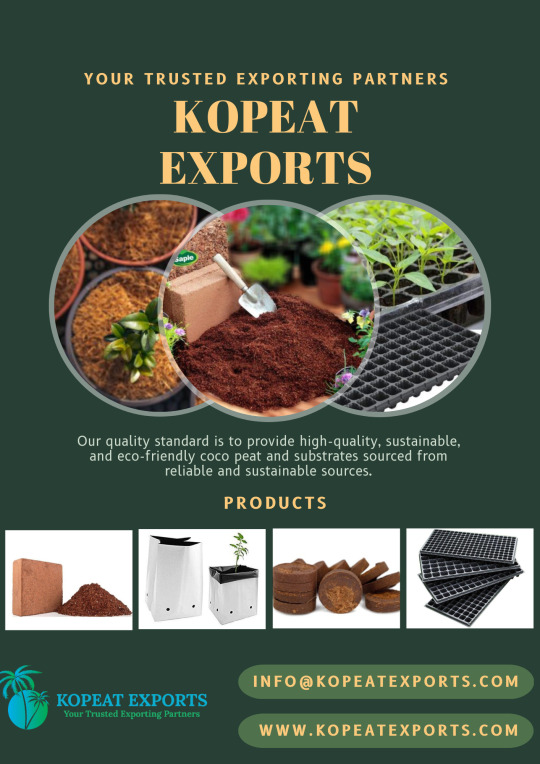
Use as Soil Amendment:
Incorporate the rehydrated coir pith into your garden soil as a soil amendment to improve its structure, moisture retention, and aeration.
Dig the coir pith into the soil to a depth of a few inches, ensuring even distribution throughout the garden bed.
Mulching:
Spread a layer of rehydrated coir pith on the soil surface around plants as mulch.
Mulching with coir pith helps conserve soil moisture, suppresses weed growth, and regulates soil temperature.
Seed Starting and Container Gardening:
Use rehydrated coir pith as a growing medium for starting seeds indoors or in seed trays.
Fill seed trays or pots with a mixture of coir pith and perlite or vermiculite for optimal seed germination and seedling growth.
Hydroponic and Aquaponic Systems:
Rehydrated coir pith can also be used as a growing medium in hydroponic and aquaponic systems.
Place the coir pith in growing containers or hydroponic trays and use it to grow plants without soil.
youtube
Watering and Maintenance:
Water your garden regularly to ensure adequate moisture levels, especially when using coir pith as a soil amendment or mulch.
Monitor the moisture levels in the soil and adjust watering as needed to prevent waterlogging or dryness.
Sustainable Disposal:
Coconut coir pith is a sustainable and biodegradable material. After use, it can be composted along with other organic waste to enrich the soil.
By following these steps, you can effectively use coconut coir pith in your garden to improve soil structure, retain moisture, and promote healthy plant growth.
#Coir Dust#coco coir pots#coco soil#coco peat#coir pots for plants#coco pith near me#coco pith#coco pot#coconut fiber for plants#coconut husk pith#coir fibre pith#Peat Grow Bags#Coir Pots For Plants#Coco Pot#Youtube
1 note
·
View note
Text
i have compiled some native plant gardening tips for those of whom are new to it based on my own experiences and trials and errors, so here goes:
if you're germinating seeds, dont use coco coir. it sucks. ignore anyone who tells you to use it. it doesnt hold moisture well at all and doesnt decompose well. look for a "seed starter" soil instead, it will have a bunch of beneficial nutrients n such to get the seeds and their roots going. if you're concerned about peat, there are plenty out there that don't have any, coast of maine comes to mind. I used to think I needed to grow them in a sterile env, mostly to prevent mold, but I find that nearly impossible to avoid, so on to my next tip:
you're better off trying to start your native seeds outside. even if you wanna use cell trays, thats fine (bring them in when it freezes though), but preventing mold when germinating inside, especially in your fridge with all your food you sometimes forget is there and gets moldy, i've found to be nearly impossible. granted, mold isnt always a bad thing, it can help eat the seed coating so the roots can grow, but this obviously isnt true for all seeds and especially not small seeds. outside is your best bet, I just find less mold grows out there. might be good to make a mini green house of sorts to keep your seed trays in, obviously thats unnecessary if you're growing them in the ground.
if you're like me and have no real ground space and only have a patio or balcony and have to grow everything in pots, I have a couple tips for you actually, but for now lets focus on winter protecting your plants. most suggest burying them under ground... im assuming like me that isn't really an option for you, so we're gonna come up with another solution. you're probably going to need to invest a good amount of money into this, depending on if you have the material around or not. but to start off:
huddle all your pots together. they can help insulate eachother better and keep eachother warm. i try to put the least cold hardy ones in the center, if you can, put them all together in a larger container like a bucket or something and cover it with lots of mulch. water sparingly and lightly, enough to wet the soil but not enough to drip through the bottom of the pot. you should be sparingly watering anyways in winter, but especially so here since they'll probably be in a container that doesnt drain unless you want to drill in holes on the bottom. try to make sure the pots dont touch the sides of the containers if they're plastic and fill in the gaps with mulch or something, plastic isnt the best material to use for pots regardless, unfortunately its the cheapest and most readily available and comes in varying sizes so I cant get mad at you for using it.
heavily mulch your plants. maybe put some straw on top of the mulch too if you have any. I used to think leaves were enough but there's too much airy space between them, you want to make the insulation as compact as possible. if you're wanting to make a place for bumblebees to hibernate i'd suggest making an entirely different leaf pile or something unrelated to your plants. (obv doesnt apply to ppl growing stuff in the ground bc you have the privilege of being able to sprinkle leaves wherever you want. bastard.)
invest in some burlap fabric and some cheap towels or blankets for even more insulation, the fuzzier the blanket the better imo, but it should be fine whatever you choose, just try not to get too thin of a fabric. the burlap and blanket/towel might not be necessary to use every day but definitely on days where its below freezing. these also will last you every year, assuming you take care of them right. cover the tops of pots but also wrap around the sides of them and maybe put a layer or two of burlap down on the ground under them, esp if they're on cold hard concrete.
if you have any plants with tuberous roots, they are more vulnerable to freezing if they're in a pot and will need extra protection or to be brought inside during a freeze, to not shock it with a temperature shift try putting the pot in the fridge if you can, otherwise again it might be good to try to make a mini green house of sorts, maybe turn one of those plastic window well covers into one? or put it in a garage if you have something like that. they also, maybe obviously but just in case, dont need to be watered as often since they have lots of water stored in themselves.
putting your pots really close to the walls of your house can also help keep them warm. not sure if its enough to prevent them from freezing but combined with everything else? well, it's survived many of my plants over the last couple years (though i didnt know about the tuber thing until recently and it explains so much why certain plants didnt make it >_>)
ok moving on from winter. lets go back to talking about pots, bc seriously if you can get your hands on ANYTHING besides a plastic pot, jump on it. they suck universally. they suck in winter and in summer. their only benefit is providing some humidity but that's not really something I personally need as someone in a temperate climate. also, the lighter the pot the better. dark plastic pots can cook the roots of your plants in the sun in summer so you have to be extra careful. also, the deeper the pot the better for native plants.
because you're growing native plants in pots, they're going to need a lot more extra care. native plants in the ground can pretty much be neglected since nature takes care of it all, but you have to provide the water, soil, fertilizer, etc. so lets talk about that:
you dont need to water every day necessarily, the old trick of watering when the top 1-2 inches is dry is your best method to go by. if you live in the midwest or northeast or anywhere it gets heavy rain, it would be good to give them a deep watering every now and then, I try to follow what the rain does and water at the same frequency as it. it would be good to water daily (maybe only a small amount if the soil is still somehow wet) on really hot days even though you dont have to water every day, like on days above 90 degrees. also the best time to water, especially in summer, is early in the morning, ideally some time before 8, 9 is ok but 8 is better imo bc it gives the roots more time to absorb the water before the sun evaporates it, and around 10 is when that starts happening. if you have to water at night, water early at night and try to avoid watering the leaves if you can as water left over on them overnight can cause mold, mildew or other diseases. if you have to water mid day, at least wait until the sun isnt directly on the plants so they can actually absorb some of the water.
since you have to provide your own water and cant rely on rain, you also have to provide your own fertilizer. I mean you already did before, but I mean liquid fertilizer. rain transfers all kinds of vitamins and minerals to the plants that receive it, but you're likely not getting nearly as much in your tap, and since your pots likely aren't being shat in by various woodland creatures, they're getting even less fertilizer. so you have to provide the fertilizers, both slow and liquid. I thought I could just get by with slow release but the plants seem to do better with liquid too, especially when in bloom. if you use slow release you dont need to use the liquid fertilizer as often, and you also likely dont have to use the liquid as frequently as it says on the bottle, since native plants generally require less nutrients to begin with, but of course this is something you'll probably have to test on your own to see how much your plants want and tolerate. I have a whole feeding schedule I can share if you want. some brands I've been using for liquid fertilizer are foxfarm (they have good soil too), microlife, and maxsea (technically a powder but you mix it with water) and for slow release is foxfarm again, jobe's organics, and lilly miller's. I'm trying to use as organic of materials as I can since I'm growing the plants for native wildlife and pollinators and I dont want to negatively effect them as much as possible. if anyone wants to know what products I use specifically hmu or leave a reply.
I trust you're able to figure out your soil situation on your own, but here's some tips just in case: try to avoid brands like miracle grow since I'm pretty sure it has inorganic materials in it, generally I'd aim for the most organic thing you can find, assuming you're growing native plants for the same reason I am, for nature. also, take those messages about well-draining soil seriously, you can use perlite but also some soils are just lighter than others, I find foxfarms is pretty light and drains well.
during winter, leave the plants as they are, dont cut them down. lots of bugs and animals have made nests or homes or have cocoons n such in there. you can cut it down in the spring when frost is nor longer a concern, but dont throw it in the trash either bc the bugs might still be sleeping in them but will be less vulnerable now that winter is gone.
ok that's all I can think of for now, I'll add on to this if I think of anything else, but hopefully this is helpful for someone out there :]
#gardening#native plant gardening#gardening tips#germinating#stratification#pollinator garden#patio garden#balcony garden
18 notes
·
View notes